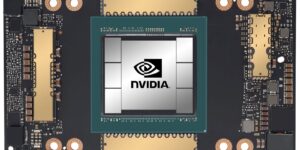Fairchild, the Mother of the Digital Era
If you’re not a techie, then the name Fairchild likely doesn’t stir any sentimental connection, but it should.
You see, in 1957, Fairchild Camera and Instrument, owned by Sherman Fairchild, launched a division that would change the world. It pioneered transistors, integrated circuits, and hired some of the legends of the computer sector.

Source: Smithsonian Magazine
One of the keys to Fairchild’s success was its long history with the military. In those days during and after WWII, huge amounts of money were being given to R&D work to keep the US military on the cutting edge of technology. The cameras and other equipment Fairchild provided built a significant reputation among the armed services. As the company began to develop transistors and integrated circuits, it was with the help of military contracts.
Some of the pioneering group doing the work saw more potential for these chips. Gordon Moore and Robert Noyce left Fairchild and started Intel (NASDAQ:INTC) in 1968. Jerry Sanders was an electrical engineer and the director of marketing at Fairchild. He left with seven of the others that were part of the brain trust and started Advanced Micro Devices (NASDAQ:AMD) in 1969.
AMD’s first client was, of course, the military. During the Cold War, technological superiority was a very big deal, particularly during the Age of the A Bomb and the first Space Race. Computers were gaining significant acceptance for anyone working in the aerospace and defense sector, and most of that work was being done in California.
AMD Grows Up
Since then, AMD has gone through a number of changes, including being bought and sold a few times over the years. Its most recent major redefinition was in 2009 when it spun off its foundries into the company GlobalFoundries (NASDAQ:GFS). GFS went public last winter.
That was a prescient move at the time because a number of new up-and-coming chipmakers were “fabless”. Fabless chipmakers don’t fabricate the chips, they simply design them. Then they hand those designs to a chip foundry that specializes in building chips for different chipmakers.

Source: The Verge
For a while, giving up the means of production was a great way to run lean and fast, since new foundries are wildly expensive. That’s why most of them are in Asia, especially China and Taiwan.
Today, AMD is one of the largest chipmakers in the world specializing in microprocessors, motherboard processors, embedded processors, and graphics processors for laptops, servers, and desktops.
Means of Production
The downside of going fabless has become clear during the pandemic, and especially China’s zero-tolerance policy that has locked down key parts of the country, even after the broader pandemic waned.
Remember, China has six cities with more than 10 million people, three times the number that the US has. China also has 160 cities with more than 1 million people. The US has 10. Lockdowns are significant in China and have massive repercussions globally because China controls the means of production for much of the tech manufacturing in the world.

Source: Malay Mail
Given that reality, it’s also crucial that China gets back up and running, and that’s happening as I write. It also means demand for chips is massive, and it’s going to take a long time to fulfill the demand, which is great news for AMD.
Also, AMD has made great strides during its fabless period and gained significant ground on the competition since it could pump a lot of its money previously used for chip foundries into R&D. It’s now a major brand that represents the top of the heap in chipmakers.
The Stock Continues to Soar
Below is a graph that shows the kinds of strides AMD has made in the past five years. When you’re averaging more than 154% annually for five years and you’re a stock with a market of nearly $200 billion, you’re hitting on all cylinders.

In the past 12 months, AMD stock is up 62% and 8% in the past month. What’s more, there’s little short interest (investors shorting the stock, betting it’s heading down), which signals that most investors know AMD has been caught in the supply chain crisis, and once it’s freed, it’s ready to take off.
Let AMD Be the Start of Your Portfolio of MegaTrend Stocks!
AMD is a MegaTrend stock we hold in one of our Premium Portfolios entitled Proffe’s Global Growth Portfolio (PGGP). It’s extremely cost-friendly at just $49.95 for an annual subscription, and it’s designed to give you global stock diversification without leaving the US market . Twice a month, you receive PGGP straight to your email inbox, so you can follow along and incorporate its top MegaTrend stocks, like AMD, into your portfolio. With the global markets correcting and due to current events (that are short-term and don’t affect our long-term trends), NOW is a particularly advantageous time to join in on our strategy and purchase the rights stocks at a bargain price!
Become a better global investor! To learn more, CLICK HERE! To subscribe to PGGP, CLICK HERE!



